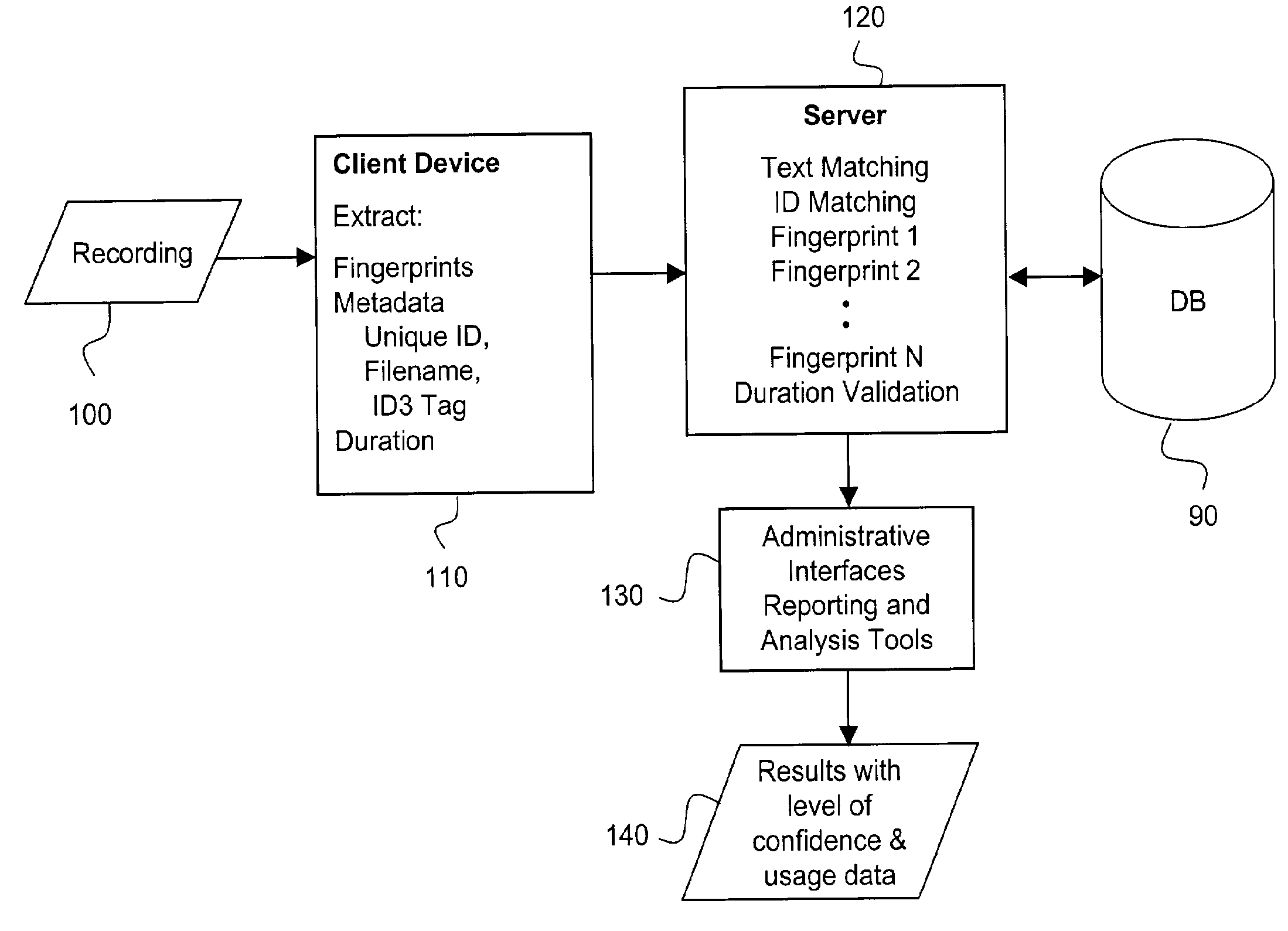Multiple step identification of recordings
a multi-step, recording technology, applied in the field of recognition of recordings, can solve the problems of inability to meet the needs of single source solutions, inability to identify audio content in files with tuid alone, inability to use resource resources, etc., to maximize the identification of recordings and minimize resource usage.
- Summary
- Abstract
- Description
- Claims
- Application Information
AI Technical Summary
Benefits of technology
Problems solved by technology
Method used
Image
Examples
Embodiment Construction
[0033]According to the present invention, a suite of identification components are provided in a system like that illustrated in FIG. 1 to facilitate analysis and identification of audio (and video) files utilizing multiple methods. Preferably, an existing database 90 containing recording identifiers and text data is combined with text-based digital audio and audio fingerprinting identification methods. Preferably, the text data in database 90 is obtained from user submissions and includes user-submitted spelling variants. One such database is available as the CDDB Music Recognition Service from Gracenote, Inc.
[0034]As illustrated in FIG. 1, a recording 100 is accessed by client device 110 via any conventional method, such as reading a digital audio file from a hard drive or a compact disc. Information is extracted from recording100 and associated information (metadata). Fingerprints are extracted from recording 100, as described in more detail below. The information that is extract...
PUM
 Login to View More
Login to View More Abstract
Description
Claims
Application Information
 Login to View More
Login to View More - R&D
- Intellectual Property
- Life Sciences
- Materials
- Tech Scout
- Unparalleled Data Quality
- Higher Quality Content
- 60% Fewer Hallucinations
Browse by: Latest US Patents, China's latest patents, Technical Efficacy Thesaurus, Application Domain, Technology Topic, Popular Technical Reports.
© 2025 PatSnap. All rights reserved.Legal|Privacy policy|Modern Slavery Act Transparency Statement|Sitemap|About US| Contact US: help@patsnap.com



